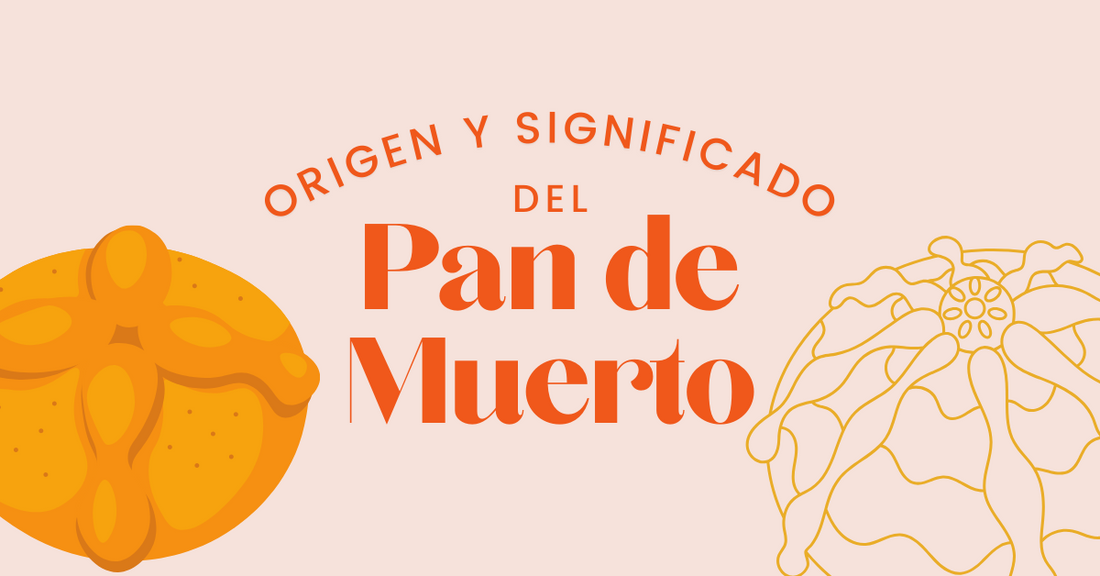Bread of the Dead: More than a Delicacy, a Link to the Afterlife
In the vast tapestry of Mexican traditions, the Day of the Dead stands as an emblematic celebration. One of the key pieces in this cultural mosaic is pan de muerto, a delicious delicacy with a history and meaning that transcends flavors and aromas. In this blog, we will explore the origin and profound significance of pan de muerto, one of the most iconic elements of this unique holiday.
Pre-Hispanic Origins: The Offering to the Gods
The history of pan de muerto (bread of the dead) has its roots in the pre-Hispanic civilizations of Mexico. Before the arrival of the Spanish conquistadors, ancient Mexicans offered bread and other foods made from corn to the gods as part of religious rituals and festivities.
In its original form, bread of the dead was not specifically associated with the Day of the Dead, but was a common element in ceremonies of worship to the gods. Pre-Hispanic breads often had the shapes of animals, geometric figures, and deities, and were considered a form of communication with the divine world.
The Fusion of Cultures: European and Mexican Traditions
With the arrival of the Spanish and the introduction of the Catholic religion to the Americas, an interesting fusion of cultures and traditions began. The Day of the Dead, originally celebrated in the ninth month of the Aztec calendar, was synchronized with the Catholic holidays of All Saints' Day and All Souls' Day (November 1 and 2, respectively).
The bread of the dead, which in its original form bore little resemblance to its present form, began to adopt European elements, such as wheat flour and yeast, which were incorporated into the making of this traditional bread. Furthermore, the bread of the dead took the form of skulls and bones to represent the symbolism of death.
The Meaning of the Bread of the Dead
Bread of the Dead is much more than just a Day of the Dead food. Each of its elements has a special meaning:
-
The round shape : The round top of the pan de muerto represents the skull of the deceased, while the four shinbones extending outward symbolize the bones of the arms and legs. Sometimes, small balls of dough are added to represent tears.
-
The decorations : The sugar sprinkled on top of the bread symbolizes the earth from which life comes and to which the dead return. In addition, a cross made of dough is placed in the center of the top of the bread, representing the four cardinal points and the connection between the world of the living and the dead.
-
The scent of orange blossom : Orange blossom is a common ingredient in the dough for pan de muerto (bread of the dead). Its pleasant aroma is considered attractive to the souls of the deceased, drawing them back to the world of the living.
The Preparation and Decoration of the Bread of the Dead
Making pan de muerto (bread of the dead) is a tradition passed down from generation to generation, and each family or bakery may have its own recipe and decoration style. Despite the differences in the details, the essence of this traditional bread remains unchanged.
To prepare Pan de Muerto (bread of the dead), ingredients such as flour, yeast, sugar, eggs, milk, and orange blossom are mixed to create a soft, fluffy dough. The dough is formed into round balls and given the characteristic decorative shape with bones and a cross on top. They are then baked until they acquire their characteristic golden color.
Sugar decoration, in particular, is an essential part of the process. Traditionally, the sugar is dyed in colors such as pink, white, and yellow, although the choice of colors can vary. The top is generously dusted with sugar, used to enhance the details of the design.
The Bread of the Dead Today
Bread of the Dead is a central element in the offerings that Mexican families make for their deceased loved ones. It is placed on altars along with other offerings, such as candles, flowers, photographs, and personal belongings.
In the days leading up to the Day of the Dead, bakeries and pastry shops across Mexico are filled with pan de muerto (bread of the dead). The variety in shape, flavor, and size is impressive, allowing people to choose the one that best suits their preferences and family traditions.
Furthermore, pan de muerto (bread of the dead) has become an icon of the Day of the Dead season and is widely enjoyed by people of all ages, as its sweet flavor and spongy texture are irresistible. Its presence in cultural celebrations, parades, and festivals related to the Day of the Dead has become a tradition that transcends borders and is appreciated around the world.
Conclusion
Bread of the Dead is a symbol of Mexico's cultural richness and the unique celebration that is the Day of the Dead. Its history dates back to ancient civilizations and has evolved over the centuries, adapting to the beliefs and traditions of Mexican culture. Beyond its delicious flavor, bread of the dead is a link to the past and a reminder of the importance of honoring and remembering departed loved ones. In its sweet form and profound meaning, bread of the dead teaches us that life and death are intertwined, and that memory is a bond that is never broken.









